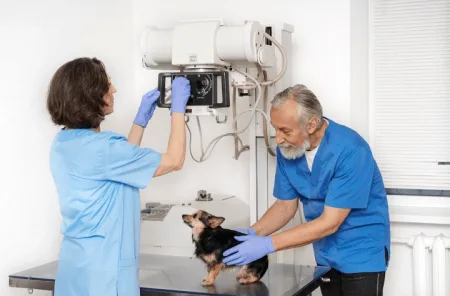The function of game localization has grown critical in the modern landscape of the gaming industry, as games are not simply products but experiences. The requirement for smooth and culturally relevant translations has never been more critical as developers attempt to reach a worldwide audience. The success of game localization, on the other hand, depends on the precise deployment of quality control procedures. In this in-depth examination, we look into the proven approach to quality control in game localization testing, a multidimensional process that extends beyond translation.
Understanding Game Localization’s Importance
Game localization entails adjusting content to varied audiences’ cultural and linguistic preferences rather than simply translating text.
Language nuances, cultural references, and humor can significantly impact the player’s experience. A poorly localized game risks being misinterpreted and can result in cultural insensitivity, reducing the game’s overall impact. A robust quality control plan is required to manage these challenges properly. Localization of video games is a complex process with several parts, and Localization Quality Assurance (LQA), or Quality Control, is an essential element of it.
When and Why is Quality Assurance Performed?
The testing part of the video game localization process is known as Quality Control. It entails reviewers, usually native speakers of the target language, well-versed in video game localization, working for a professional localization testing company, playing a game, and looking for grammatical and visual problems.
These reviewers must have a thorough comprehension of the target language and a thorough understanding of its culture so that they can identify grammar or spelling errors and provide insights regarding cultural allusions that could be added to or changed in the screenplay.
One of the final stages of the localization process is quality assurance. Before final delivery to the client, it is frequently followed by a last update based on the Quality control results. It is the final chance to ensure that no strings remain untranslated, the terminology is consistent, and any errors have been addressed.
Remember that QC entails much more than just reviewing the game’s text: it also includes quality control of the game’s visual and functional aspects. Combining these three parts into a single quality control procedure and hiring professional localization testing services will save you time and money.
The Proven Quality Control Approach:
1. Early Preparation and Collaboration
Quality control in game localization begins during the development process. Collaboration is required among game creators, translators, and translation teams. The importance of early preparation in creating clear standards and expectations for the localization process cannot be overstated. This partnership provides a comprehensive grasp of the game’s story, concepts, and emotional impact. By anticipating probable issues, developers can effortlessly include localization in the game design.
2. Cultural Awareness Training
Cultural awareness is essential for sound game localization. To navigate the numerous subtleties and intricacies of the target audience, localization staff should get extensive cultural sensitivity training. This training ensures that localized content adheres to cultural norms, preventing inadvertent offenses or misunderstandings. It goes beyond language fluency, stressing a sophisticated awareness of cultural contexts to provide players worldwide with a realistic and immersive experience.
3. Extensive Translation and Editing Procedures
The translation process is at the heart of game localization. Using a two-step strategy that includes both translation and editing by local speakers is critical. This assures linguistic accuracy while maintaining the game’s intended tone and flavor. The editing process is concerned with fine-tuning the translation, resolving cultural subtleties, and ensuring that the game’s storyline and emotional effect are maintained across languages.
4. Platform-Wide Consistency
Games are frequently available on several platforms, from consoles to PCs and mobile devices. Maintaining consistency in language, graphics, and user interface features is critical for a consistent gaming experience across different platforms. Quality control measures should address these platform-specific requirements, ensuring that the localized version of the game is tailored for each platform without sacrificing continuity or user experience.
5. Testing for Localization
In-game localization and rigorous testing are essential for quality control. Linguistic game testing, functional testing, and cultural testing are all included. Linguistic testing includes inspecting translated information for accuracy and fluency. Functional testing guarantees that the localized version runs smoothly without technical problems that impede gaming. Beyond language, cultural testing identifies potential cultural mismatches that may influence player immersion and understanding.
6. Monitoring Following Release
Quality control extends beyond the game’s initial release. Continuous monitoring of player comments, forums, and reviews offers essential information about the effectiveness of localization efforts. A prompt response to highlighted concerns displays a dedication to player satisfaction and continuous improvement. Post-release monitoring enables developers to address new issues and fine-tune their localization processes for future projects.
7. Technology Application
Technology is crucial to improving the efficiency and uniformity of game localization. Using localization tools and technology like Computer-Assisted Translation (CAT) tools and Translation Memory (TM) speeds up the process. These tools aid in maintaining a uniform terminology database, maintaining consistency among translations, and lowering the possibility of errors. While technology is helpful, balancing it with human skill is necessary to capture the intricacies of language and cultural adaptation.
8. Including Player Feedback
Player feedback is a priceless resource for improving game localization. Analyzing player comments, reviews, and community debates provides real-world data regarding the success of localization initiatives. This iterative technique enables developers to constantly improve and change their localization strategies in response to player feedback. Incorporating player feedback improves the current game and influences future localization efforts, resulting in a more player-centric approach.
To summarize, game localization is a complex and multidimensional process that necessitates a rigorous and time-tested approach to quality control. Developers can ensure a seamless and immersive gaming experience for a global audience by implementing early planning, cultural sensitivity training, stringent translation and editing processes, platform-specific consistency, localization game testing, post-release monitoring, technology integration, and player feedback analysis. As the gaming business expands globally, the need for quality control in game localization cannot be stressed. In a world where diversity and inclusivity are valued in virtual realms, a dedication to creating culturally appropriate and linguistically accurate experiences is not only a best practice but a vital necessity.



